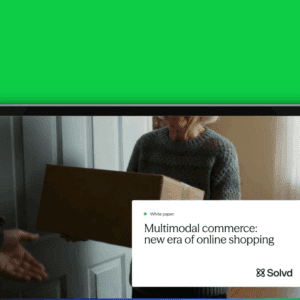By Dan Sandler, Vice President, Overheer Systems, Inc.
Since the late 1990s, RFID has been on the mind of many apparel retailers. Many of them even initiated pilots from 2004-2006. There was a lot of interest in tagging goods to keep track of them throughout the supply chain, which was a good idea; however, an even bigger benefit was discovered. Fast forward to 2010, and there has been a tremendous amount of momentum in tagging at the item level in the store rather than further back in the supply chain. Companies such as Bloomingdales, American Apparel, JC Penney, and Wal-Mart are all in the process of rolling out this technology in their stores and are seeing how powerful Item Level RFID can be. Increased sales, higher inventory accuracy and reduced labor costs are just some of the benefits these retailers are coming to see. Each one of these retailers has gone through a process in deciding how they are going to integrate Item Level RFID into their current processes.
There are three key decisions that need to be made in order to get on the road to success with Item Level RFID.
1. What items should be tagged?
Stores today are typically full of different kinds of apparel. There could be Men’s Apparel, Ladies Apparel, Shoes and Accessories all in one place. Choose a category where you will see the most benefit. One that works well is Men’s or Ladies denim. There are several different sizes, fits, and washes that all look alike, so it is difficult to keep track of what is on the store floor at any given time without Item Level RFID. It is also a basic item that will always be in stores, and it is an item that is always moving around the store. People will take many pairs of jeans to try on and maybe buy one or two. With more frequent inventory audits made possible by Item Level RFID, retailers will gain much more insight into the product. By calculating the increase in sales and the increase in inventory accuracy, this information can be used to determine how Item Level RFID is going to impact the retail chain.
2. What hardware and software will work best?
RFID hardware has been evolving over the last several years. There is no longer a question of read rates and read accuracy. Most of the hardware today is robust and will work in any retail environment. However, there are so many different options, and some require a large outlay of capital in order to be tested. That is why mobile readers such as the Motorola 3090Z are best suited for a pilot. They are inexpensive, require no network infrastructure except a wireless router, and can work all over the store.
In order for an RFID Pilot to work correctly, the hardware requires efficient software to read and filter all the data. Having software that provides alerts and inventory information is crucial so that the retailer can experience the true benefits of Item Level RFID. Today, one of the easiest things a retailer can do is subscribe to an SAAS provider to host the software, eliminating several IT issues.
3. What is the end goal of the Pilot?
Establishing solid goals can ensure your pilot is successful. Item Level RFID can bring several different benefits to the store floor, but it is up to the retailer to decide which benefits to focus on. Whether deciding to focus on higher inventory accuracy, increased loss visibility, or decreased labor costs, the retailer should be clear on what they want to accomplish. They may want to work with someone who understands RFID technology and how to setup an RFID pilot such as a consultant. Another option is to work directly with a vendor to “hand hold” throughout the process. By doing this, the retailer will be able to run the pilot efficiently and successfully.
By asking these 3 critical questions, the retailer can determine exactly what will be required of an Item Level RFID pilot and how to run it successfully. Knowing that a quick ROI is possible with the right strategy in place, retailers stand to increase sales while at the same time reducing the amount of inventory they purchase. This combination will lead to higher profits and better overall efficiency in managing the company’s most important asset, their inventory.
Dan Sandler is Vice President of Overheer Systems, a provider of item level RFID solutions for apparel and footwear retailers. Our application, Overheer Reflect, allows retailers to gain better visibility into their inventory on the store floor, which in turn allows retailers to increase sales and better manage their inventory.









